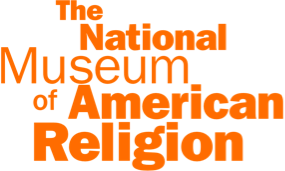Survival of History
Freedom of Religion
A Brief History of Religious Freedom in the United States
The idea of religious freedom, having the right to believe and worship according to one’s conscience, has been a core value since America’s founding, even as it has been contested by some over time and hard to live out perfectly.
A Brief Timeline
Pre-European Settlement
Native American Nations
Although Native American nations vary greatly in their religious practices prior to contact with Europeans, most are fluid and interwoven with cultural practices. Because these practices tended to be non-exclusionary, they often incorporate new ideas if they seem effective. Although the idea of “religious freedom” does not quite apply (as a European construct), Natives are functionally free from the apparatus of state coercion and ideas of orthodoxy in regards to religious beliefs and practices.
1492
Christopher Columbus
Christopher Columbus sails under the Catholic Monarchs and upon arriving at San Salvador in October, writes about the natives: “They ought to make good and skilled servants, for they repeat very quickly whatever we say to them. I think they can very easily be made Christians, for they seem to have no religion.”
1607
The Oath
Before sailing for Jamestown, an oath is taken declaring that the Pope has no authority over the emigrants.
1610
Martial Law
Jamestown is put under Martial Law by Lord de la Warr, and church attendance is required, with fourteen services held each week. The Captain of the Watch is to round up all persons, except those sick or injured, and bring them to the Church at the appropriate times. The laws prescribe a range of punishments for those who fail to attend services, as well as for the minister if he fails to conduct a service. Missing one will cost the settler his ration of food for the day. Additional absences receive increasingly severe punishments and can result in death.
The History of Religious Freedom as a Governing Principle in the United States
Learn about events that shaped religious freedom in America in our video series, “The History of Religious Freedom as a Governing Principle in the United States”.
This is the first in a series of short videos about the fascinating and informative history of religious freedom as a governing principle in the United States.
On Sunday, September 15, 1963 dynamite, planted by white supremacists, exploded at the 16th Street Baptist Church, an important headquarters for the civil rights movement in Birmingham, Alabama, killing four young girls inside the church: Addie Mae Collins (14), Cynthia Wesley (14), Carole Robertson (14), and Carol Denise McNair (11). Experts discuss this tragic event in context of religious freedom for African Americans in the United States.
Experts discuss how Roger Williams, a 17th century Puritan, and his revolutionary ideas of “soul liberty” greatly influenced the course of the idea of religious freedom in the United States, and can inform us today.
Experts discuss the story of two Jehovah’s Witnesses children who defied a school requirement to salute the American flag in 1935, and what the case teaches us about what religious freedom looks like over time, up to the present time.
